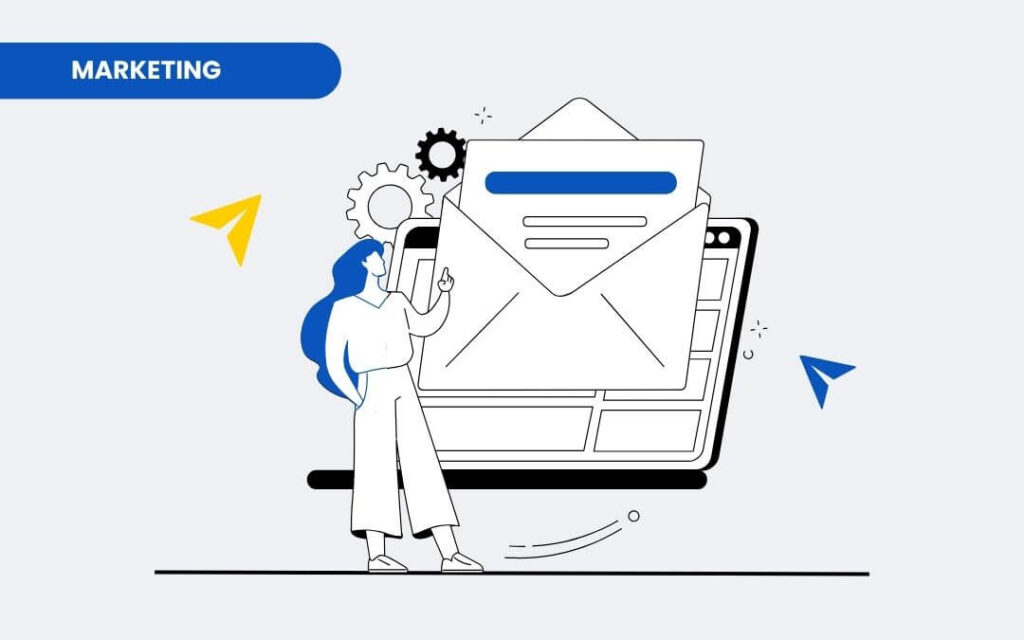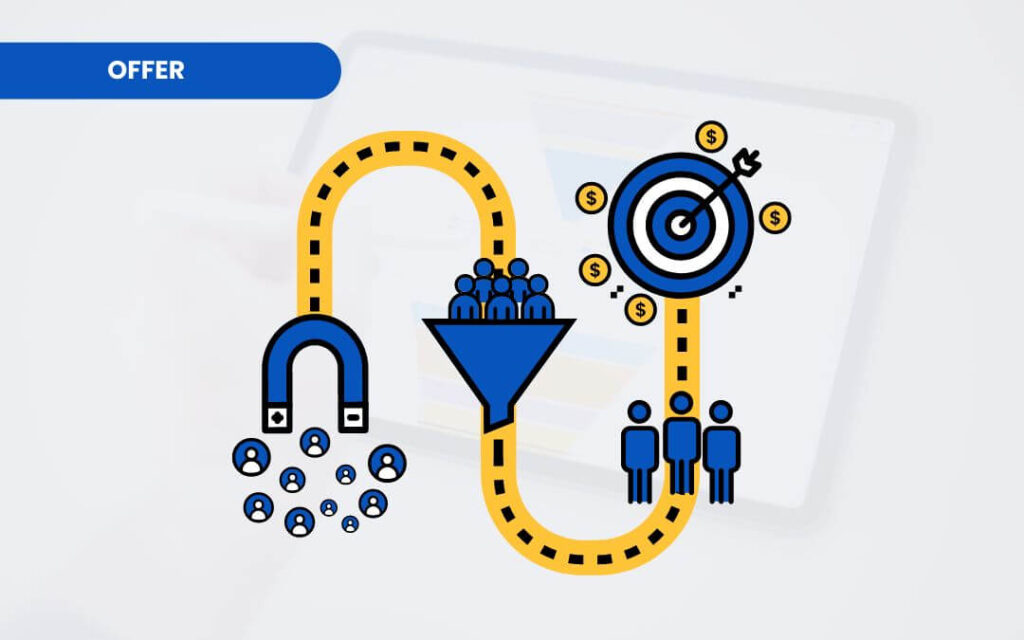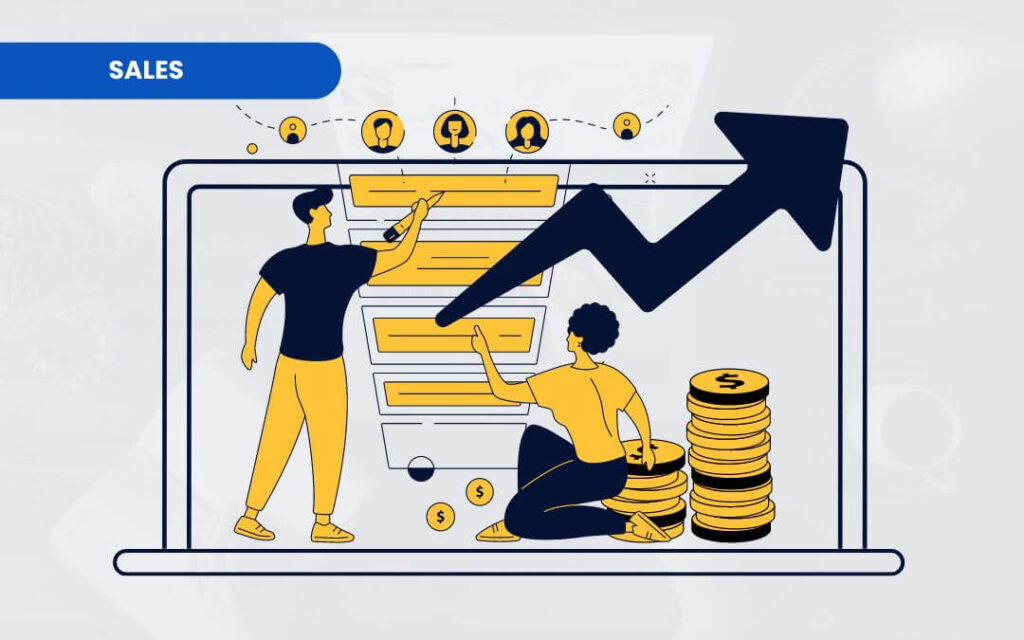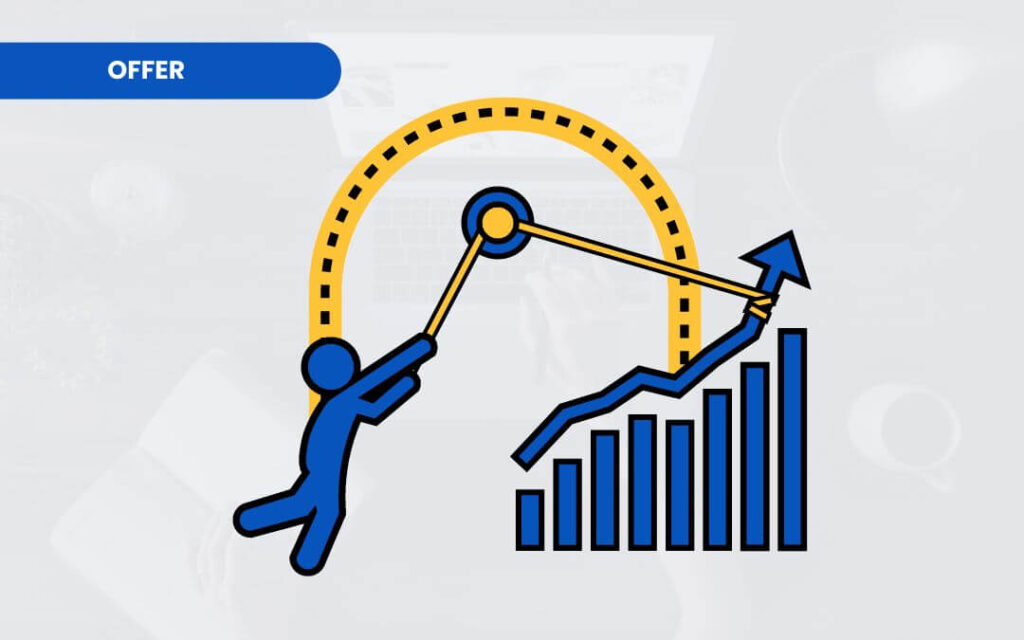Want epic email open rates? I’m talking 40%, 50%, heck, even 60% and higher.
Sound impossible? Well, I’m about to prove you wrong.
For the record, my team consistently hits over 40% open rates on email campaigns sent to over 100,000 subscribers.
It’s not sheer luck. It’s not my ridiculous good looks. It’s not “the one” magical Penn & Teller trick.
It’s relentless and consistent action and refining.
And through testing and optimizing every single part of my campaigns, I’ve cracked the email marketing code.
So, if you’re looking for ways to increase the open rate of emails, let me tell you, this is your LUCKY day.
I’ll show you the 7 tactics I used to pull off these crazy open rates. They took my email game to the next level – and they can do the same for you, too!
But first, why do we even want to obsess about open rates? Read on…
Why You Need to Care About Open Rates
Before we get tactical, you’re probably wondering:
Why should I even care about my open rate?
Who cares if someone opens my email as long as they eventually buy, right?
Nope. Your open rate is crucial for your business.
Here’s why you have to care:
- Higher open rates mean more people see your emails. This seems obvious, but it’s worth calling out. If a higher percentage of your emails are being opened, you know more of your subscribers are actually seeing your messages.
- Increased opens leads to more clicks, conversions, and revenue. There is a direct correlation between open rate and other engagement metrics like clicks and conversions. Higher opens mean more conversions.
- Good open rates keep you out of the spam folder. Open and click rates are signals to spam filters. A high open rate shows your emails are wanted, not spam.
- It shows your subscribers find your emails engaging and valuable. People don’t open emails they find boring or irrelevant. Good open rates are a sign you’re providing content your audience truly wants.
Now let’s talk about how to GET those epic open rates…
1. Pullback Gaming - A Genius Hack to Beat the System

Alright, our first tactic is something I call “pullback gaming.”
It’s this brilliant hack that trains the email algorithms to love you.
Here’s how it works…
Pullback gaming involves temporarily reducing the number of email sends you’re doing and the size of your recipient lists.
For 1-2 weeks, you would only send emails to your most highly engaged subscribers. These are people who open and click your emails at high rates already.
You’re essentially “pulling back” to only email your VIP subscribers for a period of time.
This strategy does 2 powerful things:
Increases open and click rate.
When you send to your most engaged subscribers, your open and click rates will naturally be very high.
Improves deliverability.
High open and click rates signal to ISPs that your emails are wanted. So, they are more likely to allow your future emails through to other segments of your list.
It’s like resetting and training the system in your favor!
So, when should you use the pullback gaming technique?
I use this hack whenever my rates start slipping.
Some more examples of when to employ pullback gaming include:
- When your open or click rates have declined over time
- As a “reset” if you haven’t sent any emails in a while
- After making major changes to your email content or design
Here is how to execute this technique:
- Identify the most engaged portion of your email list. This group might have opened or clicked in the past 30 days.
- Reduce your email volume, either in the number of campaigns or list size. Mail to just the highly engaged segment for 1-2 weeks.
- Ensure you’re sending great content consistently during this period. You want high open and click rates.
- Slowly begin increasing your sends again to more segments after 1-2 weeks.
- Monitor your email metrics and repeat pullback gaming as needed.
The key is being strategic about when you use pullback gaming to maintain strong deliverability.
Give it a try – the results will shock you.
2. The Blind Open - Craft Magnetic Subject Lines
Now, a crucial piece of the open rate puzzle – email subject lines.
Your subject line is the first impression your email makes. To boost opens, you need to master the art of writing subject lines that get opened.
Here are some key reasons you need to take your subject lines seriously:
- People glance at subject lines and decide whether or not to open an email. A boring subject means lower opens.
- On mobile devices, only your subject line is shown in the preview pane. This makes it even more critical.
- A compelling subject gives people a reason to open your email to satisfy their curiosity.
So, how do you create subject lines people just can’t resist opening?
Use what I call “the blind open.” Here are the key characteristics of blind subject lines:
- They create intrigue, curiosity, and interest – but don’t give away what’s inside the email.
- They often use questions or cliffhangers that tease the full story.
- They avoid overused phrases like “Quick Tip.”
Here are some examples of blind subject lines that work well:
Hey, you there?
Are you mad at me?
Guess who I ran into today?
Wait, how did you get this number?
What I just discovered about you…
This can’t be real…
See how those make you desperate to open the email?
Ask questions and use short teasers to hint at the complete story.
The goal is to generate interest without giving away your content.
Of course, you still need to deliver on the promise when users open the email.
It’s important to mix blind subject lines with more direct subject lines as well. Blind subjects work great for newsletters, while promos may need a different approach.
The best way to refine your subject lines is to test them.
Use A/B testing to send the same email content with different subject lines. See which ones drive higher open rates.
Pay attention to your email analytics to identify your top-performing subject lines overall. Then, adapt and improve on those.
Great subject lines take continual refinement but are worth the effort.
3. Aggressive Segmentation - Talk Directly to Subscribers
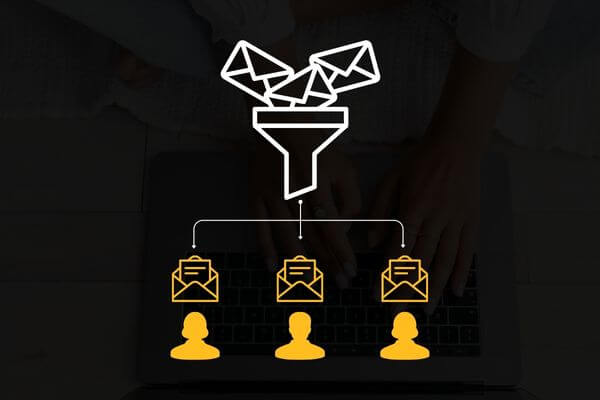
Now, here’s a technique too few people use.
You have to get crazy aggressive with segmenting your list.
I know. Many marketers don’t want to do this because it means there’s more work —they’ll need to write different types of emails.
But that’s why if you take the time to segment your list, you’ll be way ahead of 90% of the marketers out there.
Here’s why I preach about segmentation to anyone who’d listen:
When you segment your list into hyper-targeted chunks, you can…
- Personalize your emails by talking directly to each segment.
- Send content that’s relevant to different groups’ needs.
- Show subscribers you respect their time by only giving them the info they want.
This makes your relationship with your contacts 100X stronger.
So, how can you segment your list? Here are some ideas:
- Behavioral – Open rate, click rate, purchase history, etc. Group people based on how they engage with your emails.
- Demographic – Age, gender, location, industry, job role. Create segments based on who subscribers are.
- Interests – Hobbies, passions, goals. Segment by the topics and content subscribers care about.
Get creative with how you group people to send hyper-targeted messages.
I often segment my contacts based on the following:
- Recent purchasers
- Webinar attendees
- Opened Email A but not Email B
- Long-time subscribers
- Interest in topic X
- Geographical region
Really drill-down based on behavior and interests. Then, speak directly to each segment like an old friend.
Here are a few more tips on best practices for segmenting your list:
- Keep segments large enough for meaningful analysis. Don’t overdo it.
- Name segments clearly so you know who each group is.
- Adjust your segments over time based on new data and behaviors.
Alright, I think I’ve said just about everything I want on that subject. So, moving on…
4. Anonymous Testing - Avoid Embarrassing Mistakes
There’s nothing worse than sending an email…only to find you made careless errors.
That’s why you have to do anonymous test sends before hitting send.
I like doing tests for a few reasons:
Did it hit spam?
How does it LOOK?
Is the subject line too long?
How does it look on MOBILE?
Lots of reasons to do this. You can see and correct issues before they impact your subscribers.
Here’s the simple process I do for anonymous testing:
- Create a test account on an email platform (ideally Gmail, Hotmail, and Yahoo). But, if all 3 are too much, do at least one.
- Use your email service provider’s TEST SEND feature to send a copy to the test account. As long as your ESP (Email Service Provider) isn’t subpar, this can be an excellent test. I use Sendlane, and their test sends rocks.
- Check the test account inbox to see how the message looks and if there are any issues. No, not all your emails will stay out of SPAM, but a heck of a lot more will if you test before sending. It takes 2 minutes.
- Repeat this process with different subject lines to identify any that may be problematic.
When reviewing your test sends, watch for:
- Formatting issues – especially how it looks on mobile vs desktop.
- Words or phrases that trigger spam filters like “free” or “act now.”
- Subject lines that appear spammy without additional context.
Save yourself endless headaches with this quick tip. Your subscribers will love you for it!
5. Optimized Timing - When Should You Hit Send?
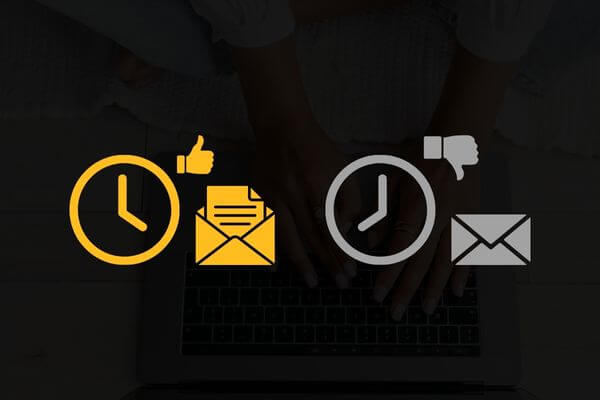
Here’s another excellent way to increase your opens…
Send emails when your subscribers are actually checking their inbox!
Seems obvious, right? But most people just blast emails whenever.
Here’s the rationale behind testing different send times:
- Engagement varies based on your subscribers’ schedules and habits.
- You need to try different sending times to find the sweet spot for YOUR audience.
- Certain send times have lower competition from other emails.
For example, I noticed my open rates were always highest at 3 p.m. on Wednesdays.
Now I send my most important broadcasts then. Open rates doubled – instantly!
So, how do you determine the best time to send?
Here’s what I suggest:
- Review email analytics to see when opens currently happen.
- Survey subscribers about their preferences.
- A/B test at different times to see the impact on open rates.
- Use optimized send features to time delivery based on user activity.
See what timing works for your audience. Try experimenting with sends at different times like:
- Early morning sends to catch people over coffee
- Mid-morning, when people may be more focused
- Afternoon, as energy tends to dip
- Evening for people who check email after work
- Late night for night owl subscribers
I know what you’re thinking—it seems like a LOT of work. But believe me, this is what my team and I do, and we’ve seen the benefits:
- There are much higher open rates when emails hit at just the right time.
- Avoid missed emails by aligning with when users are active.
- Stand out in the inbox by sending at lower competition times.
Once you nail the perfect timing, your open rates will soar.
6. Relentless Cleaning - Toss Inactive Subscribers
Got a bunch of subscribers who haven’t opened in months or years?
It’s time to give that list a good spring cleaning, my friend.
Here’s why:
- Inactive emails hurt your open and click rates.
- They waste your sending limit space.
- Over time, they can ruin your sender reputation.
So, how often should you clean your list?
I like to purge anyone who hasn’t opened in 6 months. You can use a more approach conservative, though.
Here are some example scenarios where removal may make sense:
- After a certain number of hard bounces.
- No opens for X months in a row.
- No clicks for X months in a row.
- Unsubscribe requests, of course.
I’ve got a few more tips on what you should keep in mind as you remove subscribers:
Set up automation to regularly handle list cleaning. Don’t just do one-off purges. Set up automated workflows to remove subscribers who meet your defined criteria for inactivity.
For example, you can create an automation that automatically unsubscribes people who haven’t opened in the past 6 months. Set it and forget it.
Start conservatively with more extended periods, then shorten as needed. When you first set up list cleaning automations, use longer spans of inactivity as the criteria, like 12-18 months of no opens.
As you get more comfortable, gradually tighten the criteria to be more aggressive, like dropping subscribers after 6 months of inactivity. Ease into it.
Avoid aggressive cleaning that could jeopardize email metrics. Don’t go overboard by immediately unsubscribing people after their first email non-open. You don’t want to tank your open and click rates.
The key is continually refining your hygiene practices over time as you analyze data on subscriber engagement levels. Don’t be in a rush to nuke your list. Be calculated about optimizing who stays and who goes.
If you routinely clean your list, you’ll be able to: Benefits of routinely cleansing your list include:
- Focus sends only on engaged subscribers.
- Steadily increase your open and click rates.
- Improve your overall deliverability and sender reputation over time.
It’s like decluttering – your list will breathe easy again!
7. Mail More Consistently - Defy Conventional Wisdom
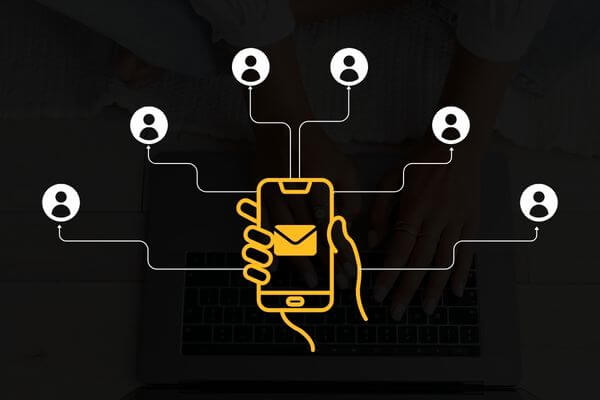
Finally, here’s one last tactic that doubled my opens.
It flies in the face of old-school advice, too.
You have to email your list way MORE frequently.
I know, you’re probably thinking:
Doesn’t more emails just annoy people?
Won’t I get unsubscribes and complaints?
Here’s the truth:
When you provide consistent value, your subscribers will LOVE hearing from you more.
It establishes trust. You become part of their routine.
Of course, you need good content. Don’t just email to email.
But when you have valuable info to share, send it consistently.
Ramp up from once a week to a few times per week. Just listen for feedback from your list.
In nearly all cases, you should communicate more, not less.
More emails = more opens. I’ve proven it time and again.
Don’t know what types of emails to send? I have four profitable email types that you can steal. These emails don’t only promise high opens but also increased conversions for your email marketing. Seriously, go check them out!
Start with One Strategy and Move Forward
There you have it! The 7 tactics I used to get over 40% open rates on gigantic email lists.
Now, watch your results! But keep in mind that every business is different, and success doesn’t happen overnight.
But I do believe that if you focus on one strategy per week until it becomes second nature, you’ll be a step closer to increasing and reaching your target open rates.
So, experiment relentlessly and improve based on the feedback from YOUR audience.
If you want more advice on email marketing and scaling your business, you have a direct line to me in our free Expert Scale Facebook group.
I’m posting daily and giving battle-tested tips on marketing and growing your business online. Ours is an AWESOME community of teachers, learners, and entrepreneurs, so I know you’ll feel right at home!
Click here to join our free Facebook group today!


